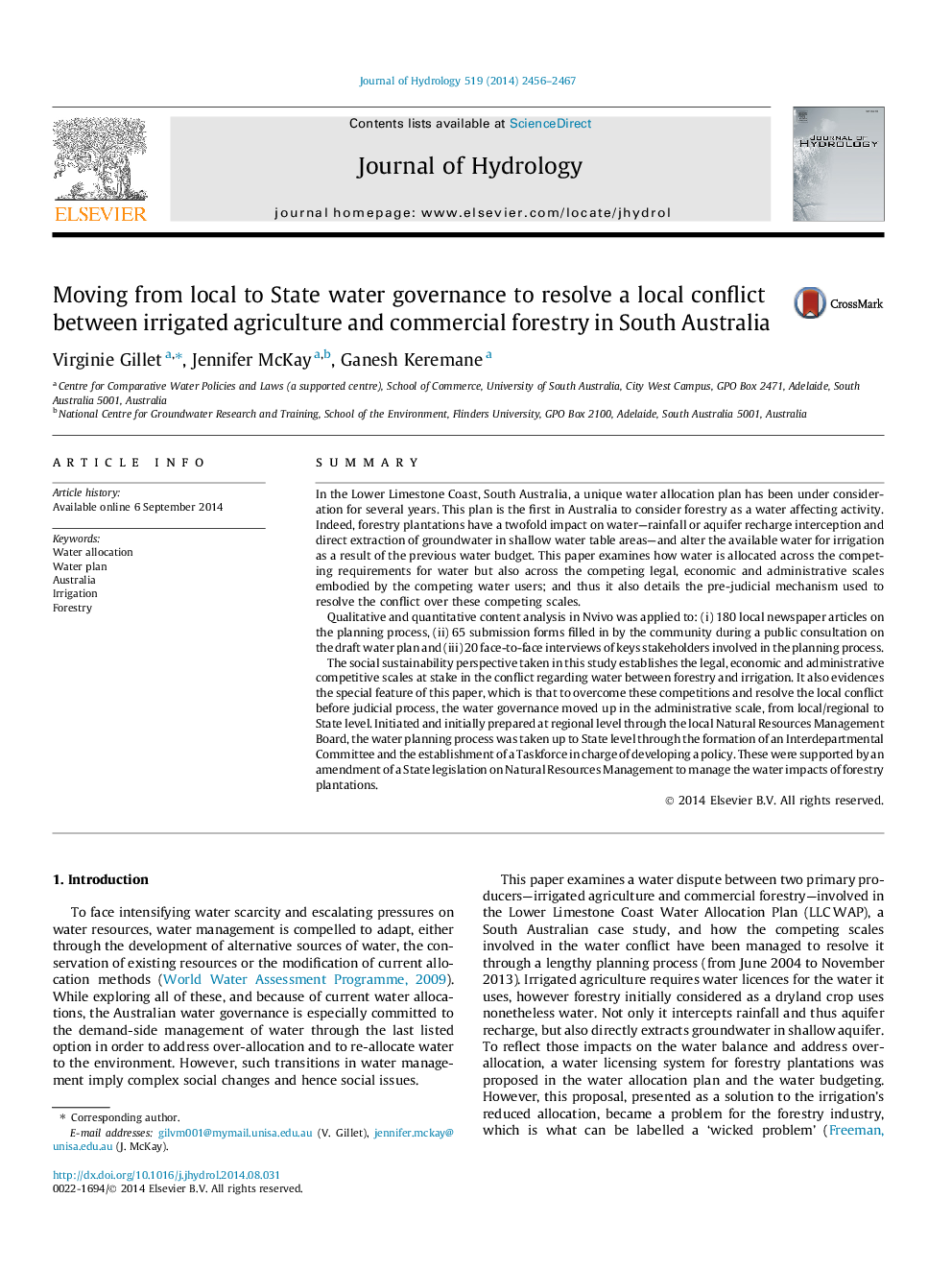| Article ID | Journal | Published Year | Pages | File Type |
|---|---|---|---|---|
| 6412610 | Journal of Hydrology | 2014 | 12 Pages |
â¢Case study of a water conflict between irrigated agriculture and commercial forestry.â¢Case involves legal, economic and administrative scales of water governance.â¢Social sustainability perspective evidences the competing scales involved.â¢Resolution by moving up from regional to State level in the administrative scale.
SummaryIn the Lower Limestone Coast, South Australia, a unique water allocation plan has been under consideration for several years. This plan is the first in Australia to consider forestry as a water affecting activity. Indeed, forestry plantations have a twofold impact on water-rainfall or aquifer recharge interception and direct extraction of groundwater in shallow water table areas-and alter the available water for irrigation as a result of the previous water budget. This paper examines how water is allocated across the competing requirements for water but also across the competing legal, economic and administrative scales embodied by the competing water users; and thus it also details the pre-judicial mechanism used to resolve the conflict over these competing scales.Qualitative and quantitative content analysis in Nvivo was applied to: (i) 180 local newspaper articles on the planning process, (ii) 65 submission forms filled in by the community during a public consultation on the draft water plan and (iii) 20 face-to-face interviews of keys stakeholders involved in the planning process.The social sustainability perspective taken in this study establishes the legal, economic and administrative competitive scales at stake in the conflict regarding water between forestry and irrigation. It also evidences the special feature of this paper, which is that to overcome these competitions and resolve the local conflict before judicial process, the water governance moved up in the administrative scale, from local/regional to State level. Initiated and initially prepared at regional level through the local Natural Resources Management Board, the water planning process was taken up to State level through the formation of an Interdepartmental Committee and the establishment of a Taskforce in charge of developing a policy. These were supported by an amendment of a State legislation on Natural Resources Management to manage the water impacts of forestry plantations.
